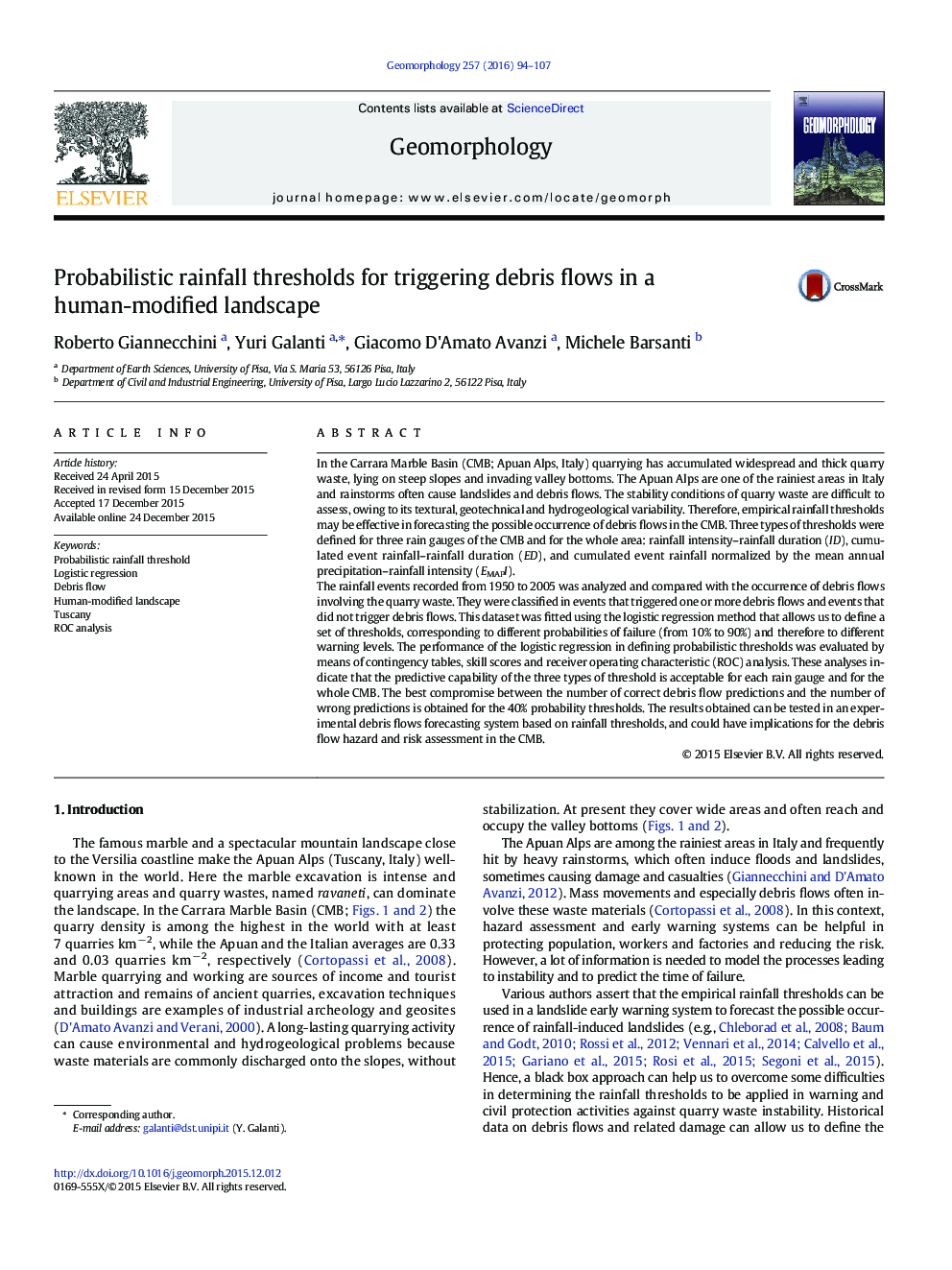| Article ID | Journal | Published Year | Pages | File Type |
|---|---|---|---|---|
| 6431636 | Geomorphology | 2016 | 14 Pages |
â¢Analysis of 191 rainstorms in a human-modified landscape in 1950-2005 periodâ¢Determination of debris flow probability using logistic regressionâ¢Rainfall thresholds definition for different probabilities of debris flow occurrenceâ¢Evaluation of thresholds using contingency table, skill scores and ROC analysisâ¢Proposal of a possible use of rainfall thresholds in debris flow forecasting
In the Carrara Marble Basin (CMB; Apuan Alps, Italy) quarrying has accumulated widespread and thick quarry waste, lying on steep slopes and invading valley bottoms. The Apuan Alps are one of the rainiest areas in Italy and rainstorms often cause landslides and debris flows. The stability conditions of quarry waste are difficult to assess, owing to its textural, geotechnical and hydrogeological variability. Therefore, empirical rainfall thresholds may be effective in forecasting the possible occurrence of debris flows in the CMB. Three types of thresholds were defined for three rain gauges of the CMB and for the whole area: rainfall intensity-rainfall duration (ID), cumulated event rainfall-rainfall duration (ED), and cumulated event rainfall normalized by the mean annual precipitation-rainfall intensity (EMAPI).The rainfall events recorded from 1950 to 2005 was analyzed and compared with the occurrence of debris flows involving the quarry waste. They were classified in events that triggered one or more debris flows and events that did not trigger debris flows. This dataset was fitted using the logistic regression method that allows us to define a set of thresholds, corresponding to different probabilities of failure (from 10% to 90%) and therefore to different warning levels. The performance of the logistic regression in defining probabilistic thresholds was evaluated by means of contingency tables, skill scores and receiver operating characteristic (ROC) analysis. These analyses indicate that the predictive capability of the three types of threshold is acceptable for each rain gauge and for the whole CMB. The best compromise between the number of correct debris flow predictions and the number of wrong predictions is obtained for the 40% probability thresholds. The results obtained can be tested in an experimental debris flows forecasting system based on rainfall thresholds, and could have implications for the debris flow hazard and risk assessment in the CMB.
